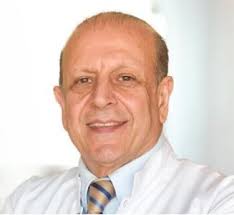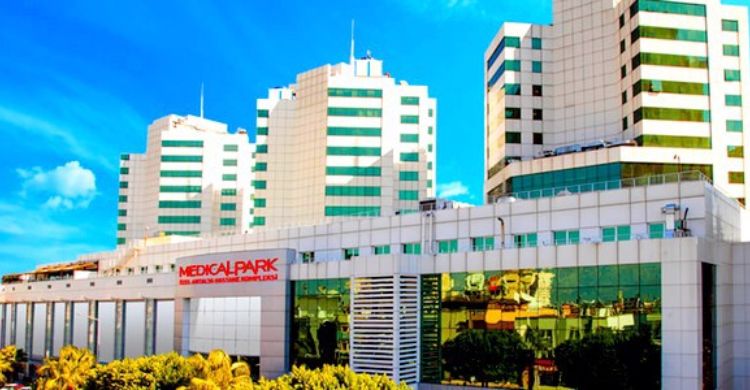Orthopaedic
Redo Release
Redo Release
Redo release surgery is a follow-up procedure to correct or improve outcomes from a previous surgery. It addresses complications or incomplete releases, restoring function and relieving symptoms.
Redo release surgery
Redo release surgery is the term used in reference to a surgical operation that is repeated, to address a recurring, persistent or poorly treated issues following a first release surgery. It is present in such conditions as:
- Urethral stricture (redo urethral release)
- Redo carpal tunnel release (redo trigger finger release) Tendon or nerve entrapment.
- Scar contracture release
- Muscle or fascial release treatment.
The aim is to improve the functioning, to alleviate pain/obstruction and to rectify reoccurrence.
Redo release procedure
A redo release procedure is an additional procedure, a repeat surgical operation, in which a previous release surgery has not relieved sufficiently, or the condition has returned (because of scarring, fibrosis, incomplete release, or anatomical variations). The purpose of this surgery is to restore normalcy, de-symptomize or rectify any unaddressed problems in the first surgery.
Common procedures that are done in redo release are:
- Urethral stricture (redo urethral release)
- Tendon/nerve compressions (redo carpal tunnel release, redo trigger finger release)
- Scar contractures
- Muscle or fascial tightness
Redo Release Surgery Steps
Preoperative Evaluation:
- Close examination of the first surgery.
- Recurrence/persistent symptoms.
- Imaging (USG, MRI, CT, urethrogram based on the disorder)
- Assessment of fibrosis, scar tissue and functional impairment.
Anaesthesia:
- Depending on the location of surgery and the condition of a patient, regional, spinal, or general anaesthesia are applied.
Incision & Access:
- A new incision or the extension of the previous one is made.
- Tissues are fibrotic and anatomy may be distorted so care is taken during careful dissection.
Problem Area Identification:
The surgeon identifies:
- Residual tight bands
- Incomplete prior release
- Scar tissue
- Entrapped nerve/tendon
- Repeating stricture part.
Complete Release:
According to the condition of the patient:
- Fibrotic tissue excision
- Stricture debridement and discharge.
- Release of tendons or nerves
- Contracture release
- Muscle/fascial release
- Reconstruction is done in case required:
- Graft reinforcement (e.g., buccal mucosa urethra)
- Local or rotational flaps
- Skin grafting (because of contractures)
Hemostasis and Reconstruction:
- Bleeding control
- Recreative operations where there is need.
- Closure in layers
- Dependent on type of surgery (e.g., urethral cases) drains or catheters.
Redo surgery definition
Redo surgery is a repeat operation of the same anatomical area in which an initial surgery has been conducted, most commonly due to failure of the first operation to result in the desired outcome or recurrence of condition. It is done to rectify chronic symptoms, complications, partial rectification or emergence of new problems subsequent to the original operation.
Redo surgeries are normally needed in cases where:
- Morbidity (e.g., urethral stricture, hernia, tumor)
- Breakdown or failure of the initial surgical repair.
- Too much scar tissue is formed.
- Improperly released or repaired in the first operation.
- Revision of complications arising after surgery.
Since the tissues were already surgically performed, redo surgery is more complicated, and it requires scar tissue, new anatomy, and increased technical requirements.
Indications for redo surgery
Redo surgery is done when the results of a prior surgical operation are not as expected or when the condition recurs. The significant predictors are:
Reoccurrence of the Original Condition
- The most common indication.
- Examples: recurrent urethral stricture, recurrent hernia, recurrent tumor, recurrent contracture.
Unfinished Correction or Weak Preliminary Surgery
- In cases where the initial step was not able to eliminate the issue completely.
- Remaining stricture, partial excision, incomplete excision, or under repair.
Unremitting or Progressive Symptoms
- Suffering, hinderage, faulty functioning, or failure of the alleviation of symptoms following primary surgery.
Formation of Excessive Scar Tissues
- Fibrosis resulting in new compression, obstruction or limited movement.
- Usually follows tendon, nerve or urethral surgery.
Repair Breakdown or Surgical Failure
- Hernia mesh failure
- Graft/flap breakdown
- Anastomosis failure
- Stent displacement or implant failure.
Postoperative Complications
- Infection
- Hematoma/seroma
- Necrosis
- Stricture formation
- Hardware malfunction
- Such complications can necessitate a redo surgery to repair the damages or to reestablish the functionality.
Anatomical distortion
- Distorted anatomy and hence the initial repair is ineffective or introduces new problems.
Evolvement of the Underlying Disease
- Such diseases as tumors, fibrotic diseases or inflammatory diseases that persist following the original surgery.
Functional Impairment that has an Impact on the Quality of Life
- Cosmetic dissatisfaction, chronic pains, difficulty in urination, mobility reduction, or discomfort following the primary surgery.
Redo release surgery complications
The risks of complications associated with redo release surgery are increased to those associated with primary surgery due to the fact that the tissues have already been subjected to surgical procedures thus causing scarring, fibrosis and distortion of anatomy. The significant complications are:
Bleeding and Hematoma Development
- The presence of thick scar tissue predisposes bleeding during dissection.
- Hematoma can slow down the healing process or cause higher risks of infection.
Infection
- Repeat surgeries are more likely to be infected postoperative, because of the long surgical duration, uncovered tissue, and the disruption caused by a previous surgery.
Recurrence of the Condition
Recurrence may follow redo surgery and this is because of:
- Persistent fibrosis
- Progressive disease
- Complex anatomy
- Usually occur with urethral strictures, tendinopathies, and contractures.
Nerve Injury or Neurological Loss
- Nerves become scarred, thereby becoming difficult to locate.
Possible outcomes:
- Numbness
- Tingling
- Weakness
- Neuroma formation
- Chronic neuropathic pain
Damage to Adjacent Buildings
Because of perverted anatomy and fibrosis:
- Blood vessels
- Tendons
- Muscles
- Urinary tract (during urethral surgeries) can be damaged accidentally.
Unusual Proliferation of Scar Tissues (Re-Fibrosis)
- Among the most frequent of post-redo surgery issues.
- May re-induce contractures, compression of nerves or stricture recurrence.
Poor Wound Healing
- Preoperative surgery decreases blood flow to the region.
Results may include:
- Delayed healing
- Wound dehiscence
- Necrosis in severe cases
Need-Graft or Flap Failure (In Case used)
In case a graft or flap is used in reconstruction:
- Necrosis
- Infection
- Contracture
- Graft failure may or may not be partial or total.
Minor Functional Improvement
Even following technically successful redo surgery:
- Pain may persist
- Limitations to range of motion can persist.
- Based on the extent of tissue destruction, urinary flow can only partially improve.
Anaesthesia-Related Complications
- Higher frequency during redo surgeries as it takes longer.
- May contain respiratory or cardiovascular incidences.
Redo release recovery time
The average recovery period following redo release surgery is normally longer compared to that following a primary release surgery due to scar tissue, disturbed anatomy and the complexity of a revision surgery. The precise time of recovery will depend on the area of the anatomy that is exposed and also the magnitude of reconstruction.
General Recovery Timeline
- Initial healing: 1–3 weeks
- Functional recovery: 3–8 weeks
- Full remodeling of tissues: 3-6 months.
- Fibrosis may prolong pain, swelling and stiffness compared to the first surgery.
Type of Redo Release Recovery Time:
Redo Tendon/ Nerve Release (e.g. carpal tunnel, trigger finger)
- Wound healing: 10–14 days
- Functional recovery: 3–6 weeks
- Full strength return: 6–12 weeks
- In most cases, the physiotherapy is necessary to regain the mobility.
Redo Scar Contracture Release
- Healing: 2–4 weeks
- 4-8 weeks: improvement in functional mobility.
- Scar maturation: 3–6 months
- Physiotherapy and pressure clothes can be recommended.
Redo Urethral Release / Urethral Stricture Redo
- Catheter duration: 2–3 weeks
- Initial healing: 3–6 weeks
- Full recovery: 6–12 weeks
- Uroflowmetry is used to monitor the improvement of urinary flow.
Redo Muscle / Fascial Release
- Healing: 2–3 weeks
- Functional recovery: 4–8 weeks
- Resurgence to normalcy: 6-10 weeks.
Restoring usual daily activities
- Light activities: 1–2 weeks
- Work (desk job): 2–3 weeks
- Work (physical job): 4–8 weeks
- Strenuous activity/exercise: Exercise after 6-12 weeks depending on the type of surgery.
Conclusion
Redo release surgery It is a significant operation done to correct the condition and relieve it fully either because the initial release did not do so or because the condition relapses as a result of fibrosis, unfinished correction, or postoperative complications. Surgery Due to scar tissue and altered anatomy, revision surgery is more complicated; however, revision surgery is capable of greatly restoring functional capabilities, decreasing symptoms, and enhancing quality of life as long as implemented by an expert. Through adequate postoperative care, physiotherapy where necessary, and close follow up, majority of patients would record positive results despite the technical difficulties that are likely to be encountered on redo procedures.
Affordable redo release surgery India GetWellGo
GetWellGo is regarded as a leading supplier of healthcare services. We help our foreign clients choose the best treatment locations that suit their needs both financially and medically.
We offer:
- Complete transparency
- Fair costs.
- 24 hour availability.
- Medical E-visas
- Online consultation from recognized Indian experts.
- Assistance in selecting India's top hospitals for redo release treatment.
- Expert surgeon with a strong track record of success
- Assistance during and after the course of treatment.
- Language Support
- Travel and Accommodation Services
- Case manager assigned to every patient to provide seamless support in and out of the hospital like appointment booking
- Local SIM Cards
- Currency Exchange
- Arranging Patient’s local food
FAQ
Why should a release surgery be repeated?
- The second operation is possible because of the formation of scar tissue (fibrosis), insufficient initial release, or the reoccurrence of the disorder, or postop complications.
Does redo release surgery complicate the initial surgery?
- Yes. The redo surgery is more difficult to perform and needs a skilled surgeon due to scar tissue and irregular anatomy.
Will the surgery require physiotherapy?
- Yes--often, in the case of tendon, nerve, or contracture release redo. Physiotherapy enables a person to move freely and avoid stiffness.
Does redo release surgeries have a lower success rate?
- The rate of success is marginally low compared to primary operations because of fibrosis, although with experienced surgeons, the success is good in the majority of cases.
Is a graft/flap always necessary in a redo surgery?
- Not always. When tissue loss, severe fibrosis, or reconstruction is required they are used (e.g., in urethral surgeries).
Is there a possibility of repetition of redo surgery?
- Yes, it can re-occur, but the chance of it is reduced by the correct operation, post-operative and treatment of all underlying causes.
TREATMENT-RELATED QUESTIONS
GetWellGo will provide you end-to-end guidance and assistance and that will include finding relevant and the best doctors for you in India.
A relationship manager from GetWellGo will be assigned to you who will prepare your case, share with multiple doctors and hospitals and get back to you with a treatment plan, cost of treatment and other useful information. The relationship manager will take care of all details related to your visit and successful return & recovery.
Yes, if you wish GetWellGo can assist you in getting your appointments fixed with multiple doctors and hospitals, which will assist you in getting the second opinion and will help you in cost comparison as well.
Yes, our professional medical team will help you in getting the estimated cost for the treatment. The cost as you may be aware depends on the medical condition, the choice of treatment, the type of room opted for etc. All your medical history and essential treatment details would be analyzed by the team of experts in the hospitals. They will also provide you with the various types of rooms/accommodation packages available and you have to make the selection. Charges are likely to vary by the type of room you take.
You have to check with your health insurance provider for the details.
The price that you get from GetWellGo is directly from the hospital, it is also discounted and lowest possible in most cases. We help you in getting the best price possible.
No, we don't charge patients for any service or convenience fee. All healthcare services GetWellGo provide are free of cost.
Top Doctors for Orthopaedic
Top Hospitals for Orthopaedic
Contact Us Now!
Fill the form below to get in touch with our experts.



.jpg)



